Did you know that skeletal muscle accounts for approximately 40% of your body weight? Skeletal muscles are all the muscles that attach to your bones. You can increase their flexibility by stretching and strengthen them with exercise.
Skeletal muscles use 50-75% of all the protein in your body, which is why eating protein is essential to maintaining muscle mass. Common protein sources include animal products like meat, fish, eggs, and dairy, and plant products like beans, legumes, nuts, and some grains. New research by Dr. Benjamin Wall, Professor of Nutritional Physiology at the University of Exeter, United Kingdom, and colleagues has identified another possible protein source: algae.
Algae as a Protein Source
Proteins1 are large macromolecules found in your muscles, bones, and every tissue and organ in the body. The estimated 10,000 proteins the body needs to function are involved in all the chemical reactions and cellular processes that keep us alive.
The building blocks of proteins are amino acids2, small molecules that link together into longer chains to form proteins. All the proteins in the human body are based on 20 amino acids. Some of these amino acids can be produced by the body or derived from other amino acids. Others can only be obtained through the protein we consume. Amino acids that must come from food sources are called essential amino acids3. Nonessential amino acids4 can be produced in the body based on essential amino acids or from the normal breakdown of proteins in the body.
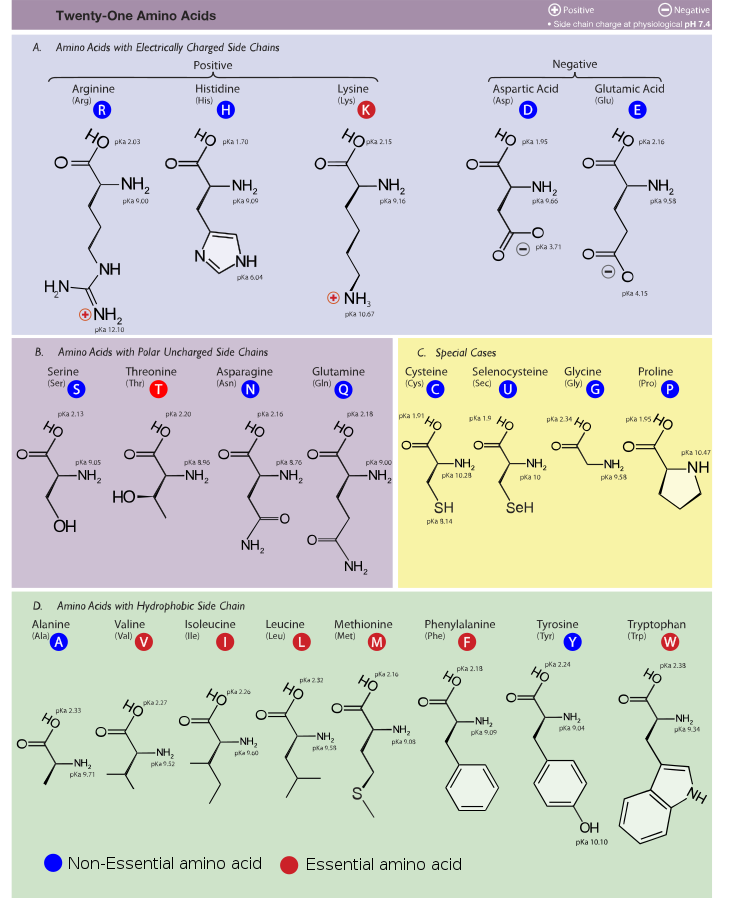
Figure 1.
Essential and nonessential amino acids.
[Source: https://commons.wikimedia.org/wiki/File:Molecular_structures_of_the_21_proteinogenic_amino_acids.svg]
As the world population grows, there are increasing ethical and environmental concerns about the production of animal proteins. Raising animals for meat, eggs, and dairy uses large amounts of resources including land and water. In addition, farm animals are an important source of water pollution and greenhouse gases. Plant proteins are generally more environmentally sustainable to produce, but it’s harder to find as much protein in plants, and you have to eat multiple complementary plant sources to get all the essential amino acids you need. “There are definitely effective strategies for getting enough dietary protein with plants,” emphasized Dr. Wall. “But it is also worthwhile to consider other potential sources of protein.”
Algae5 are marine organisms that produce energy through photosynthesis. They range from tiny organisms found on coral reefs to seaweed and giant kelp. Algae are naturally high in protein and contain even more protein than animal-derived products such as meat or dairy. Although algae have been eaten in small amounts for thousands of years, they have rarely been considered a source of protein, in part because they don’t taste very good on their own.
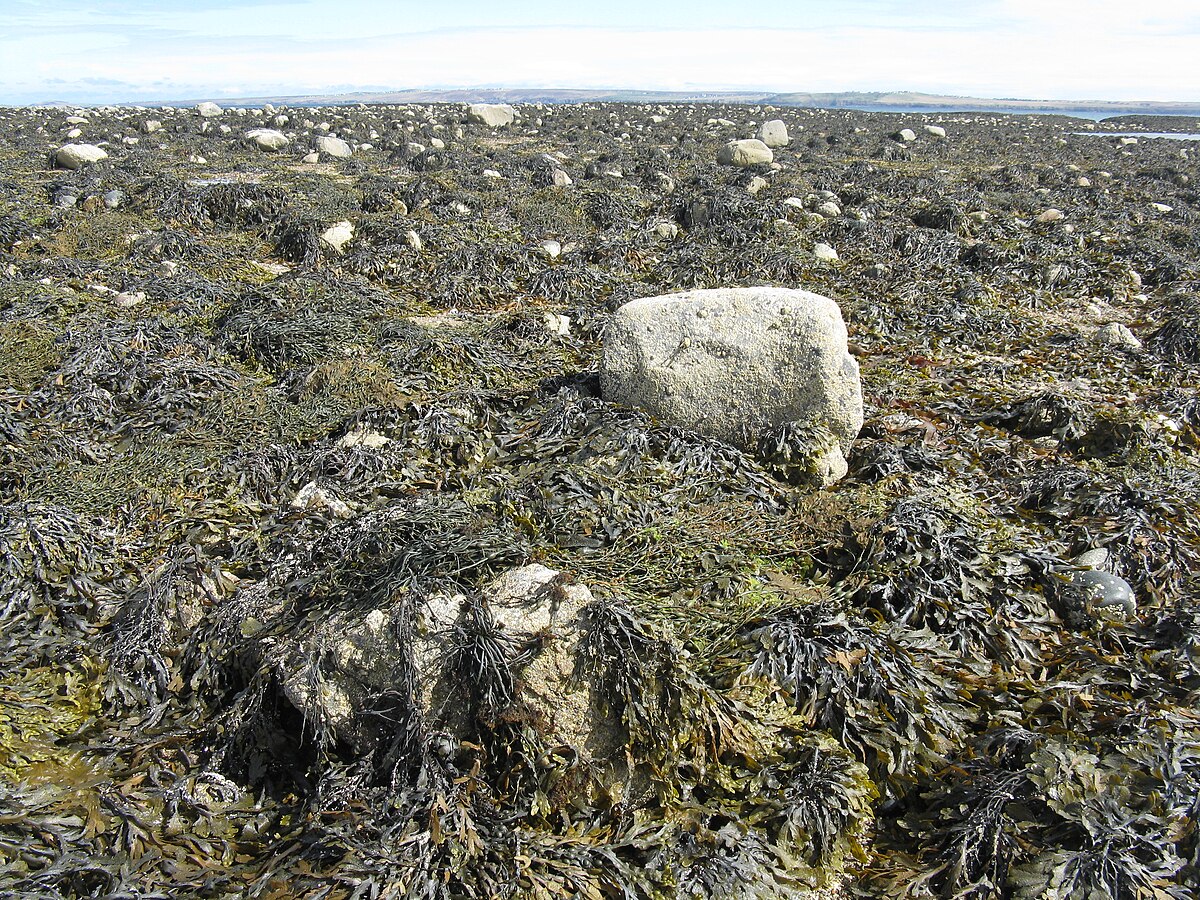
Figure 2.
Brown algae, Outer Hebrides, United Kingdom.
Algae are beneficial from an environmental perspective because they have minimal carbon emissions and significantly less land and water use than other protein sources. Dr. Wall believes algae could become a useful source of dietary protein for the world population if they go through a commercialization process to optimize their taste. For that to happen, researchers first need to show that algae are equivalent to other established protein sources.
Testing the Nutritional Quality of Algae
Dr. Wall is a nutritional physiologist whose research focuses on how nutrition affects the body, particularly skeletal muscle6 tissue. When we eat protein, our bodies break the protein molecules down into their component amino acids. These amino acids are absorbed in the intestines and enter the bloodstream, where they are used to facilitate the building of new proteins. “Throughout the day, our muscle tissue balances protein synthesis and protein breakdown,” explained Dr. Wall. When we eat a meal, the rate of protein synthesis accelerates, and the rate of protein breakdown slows. Between meals, the opposite happens. In most people, the amount of protein in the body will stay about the same from day to day.
The process of muscle protein synthesis has been well-studied in the laboratory. Research participants are given a labeled amino acid that can be tracked in the bloodstream and muscle tissue. By taking multiple blood samples and muscle tissue biopsies7, researchers can observe how the labeled amino acids become incorporated into muscle tissue. To date, these experiments have all been conducted using animal-derived proteins such as meat, dairy, and eggs. There is little understanding of how the body metabolizes proteins from non-animal sources. Dr. Wall’s research seeks to fill this gap.
In this research, Dr. Wall wanted to know whether alternative protein sources such as algae would be incorporated into skeletal muscle tissue as efficiently as animal-derived proteins. He used two algae products that are commercially available for anyone to purchase, most commonly in natural foods stores: spirulina and chlorella. Spirulina is commonly referred to as blue-green algae. It is actually not a type of algae but a bacteria that derives energy from photosynthesis, called cyanobacteria8. Chlorella is a seaweed that commonly grows in fresh water.
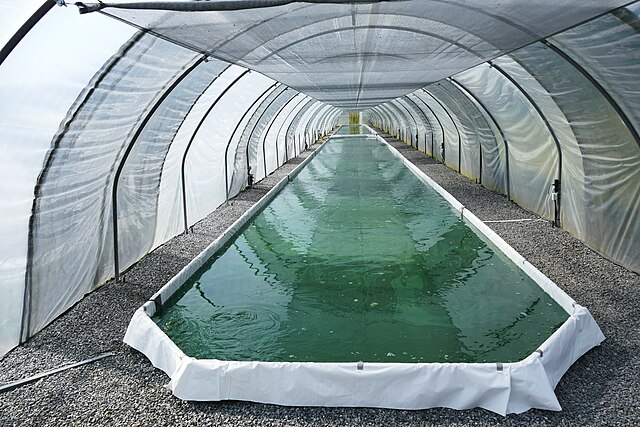
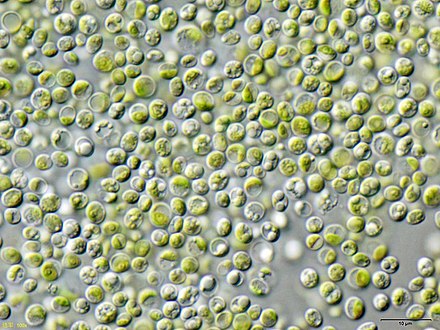
Figure 3.
Spirulina grown on a farm (left) and chlorella (right).
[Source: Peter Potrowl, https://commons.wikimedia.org/wiki/File:Argagnon_-_Ferme_de_spiruline_-_2.jpg; https://en.wikipedia.org/wiki/Chlorella]
These two algal proteins were compared with a fungal-derived protein called mycoprotein9, an established protein source used as a control.
Experimental Methods
Dr. Wall recruited 36 healthy college student volunteers, 18 men and 18 women, to participate in his research. The participants came to the laboratory and performed a specific resistance training protocol using leg press and leg extension machines. They exercised only their dominant leg so the researchers could compare muscle protein synthesis between the exercised leg and the rested leg.
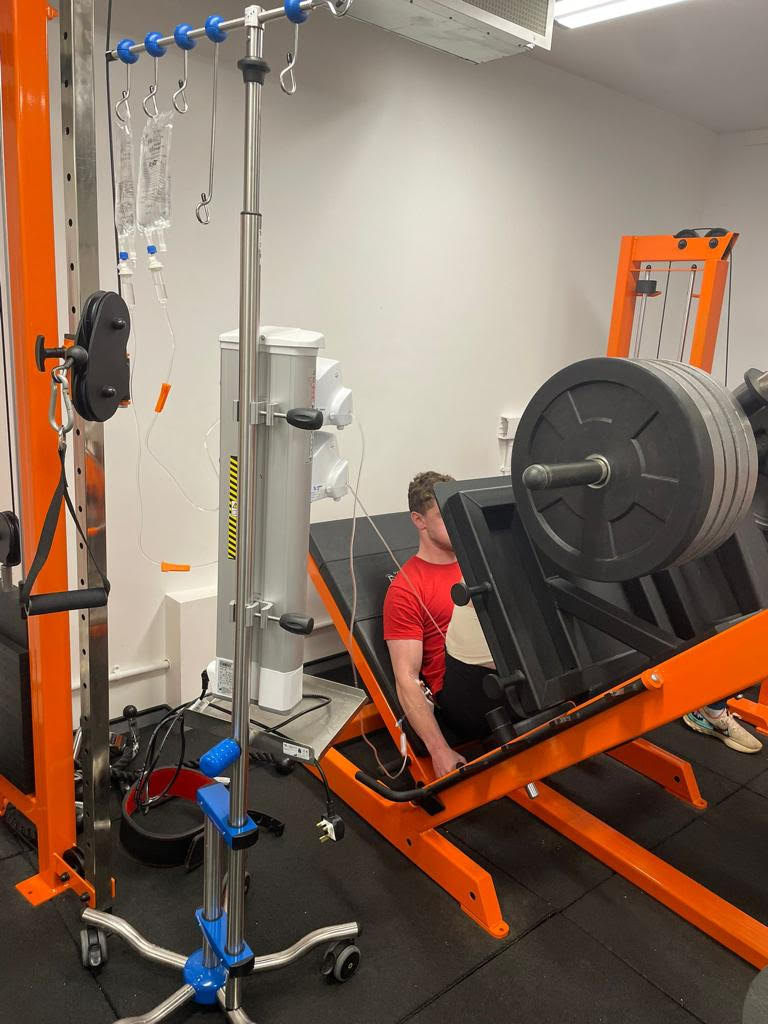
Figure 4.
A study participant performing the exercise protocol in the laboratory.
[Source: Dr. Wall]
After exercising, the participants were randomly assigned to one of three protein drinks: spirulina, chlorella, or mycoprotein. Neither the participants nor the research assistants who gave them the drink knew which drink they received.
To reduce variation between participants as much as possible, the researchers asked participants to eat normally and avoid strenuous activity in the days leading up to their participation in the laboratory. They also asked participants to complete a daily food diary for two weekdays and one weekend day before the experiment. Finally, the participants were asked to fast the night before the experiment.
On the day of the experiment, the researchers took a baseline blood sample and an initial muscle tissue biopsy from the resting leg. The participants began an infusion of a traceable amino acid that the researchers would be able to identify in tissue samples. They completed the one-legged resistance training protocol and immediately received their assigned protein beverage. The participants were given five minutes to drink their protein beverage.
The researchers did their best to mask any clues that would help participants guess which beverage they were drinking. Algae have a characteristic green color, so the researchers added green food coloring to all the beverages. The beverage was served in a dark, covered container so the participants could not see what it looked like. Finally, the participants were asked to hold their nose while drinking the beverage to reduce any smells.
Two hours following the exercise protocol, the researchers collected more bloodwork and muscle tissue samples. This time, biopsies were collected of both the resting and the exercised leg.
Results and Future Work
Once the participants left the laboratory, it was time for Dr. Wall and his team to analyze the data. They quantified amino acid concentrations in the blood and rates of protein synthesis in both rested and exercised muscle tissue. They were looking for any differences in these measures based on which protein beverage participants had consumed.
The results showed that participants in all three groups had increased blood amino acid concentrations and increased protein synthesis rates in both rested and exercised tissue. Spirulina increased these levels to a greater extent than chlorella or mycoprotein. Overall, the researchers concluded that both spirulina and chlorella were equivalent protein sources compared to the established non-animal-derived protein source mycoprotein.
“This is a really good starting place and proof of concept for the possibility of algal-derived protein in the future,” concluded Dr. Wall. Next, the researchers want to obtain more information about how algal-derived proteins affect metabolism over longer periods of time. Dr. Wall is currently working on a study to quantify these impacts over several days.
In addition, Dr. Wall is planning to focus upcoming experiments on older adults. For these initial experiments, Dr. Wall used young volunteers because age impacts how our bodies metabolize protein. Specifically, older adults need more protein than younger people because they build up less muscle per gram of protein. However, they tend to have less appetite. Dr. Wall wants to know whether algae could be a good source of high-quality protein for older adults to stay healthy.
Dr. Benjamin Wall is Professor of Nutritional Physiology at the University of Exeter, United Kingdom. His research focuses on how nutrition, especially dietary protein, affects the body.
For More Information:
- Williamson E, et al. “Microalgae: potential novel protein for sustainable human nutrition.” Trends Plant Sci. 2024 Mar;29(3):370-382. https://pubmed.ncbi.nlm.nih.gov/37690907/
- van der Heijden I, et al. “Algae Ingestion Increases Resting and Exercised Myofibrillar Protein Synthesis Rates to a Similar Extent as Mycoprotein in Young Adults.” J Nutr. 2023 Dec;153(12):3406-3417. https://www.sciencedirect.com/science/article/pii/S0022316623725960?via%3Dihub
- van der Heijden I, et al. “Alternative dietary protein sources to support healthy and active skeletal muscle aging.” Nutr Rev. 2023 Jan 10;81(2):206-230. https://pubmed.ncbi.nlm.nih.gov/35960188/
To Learn More:
Dietary Protein
- Harvard School of Public Health. https://www.hsph.harvard.edu/nutritionsource/what-should-you-eat/protein/
- U.S. Department of Agriculture. https://www.myplate.gov/eat-healthy/protein-foods
Algae
- Ocean Conservancy. https://oceanconservancy.org/blog/2023/07/25/wild-facts-about-algae/
- Chapman, R. “Algae: the world’s most important “plants”—an introduction.” Mitig Adapt Strateg Glob Change. 2013 18: 5–12. https://link.springer.com/article/10.1007/s11027-010-9255-9
Written by Rebecca Kranz with Andrea Gwosdow, PhD at www.gwosdow.com

